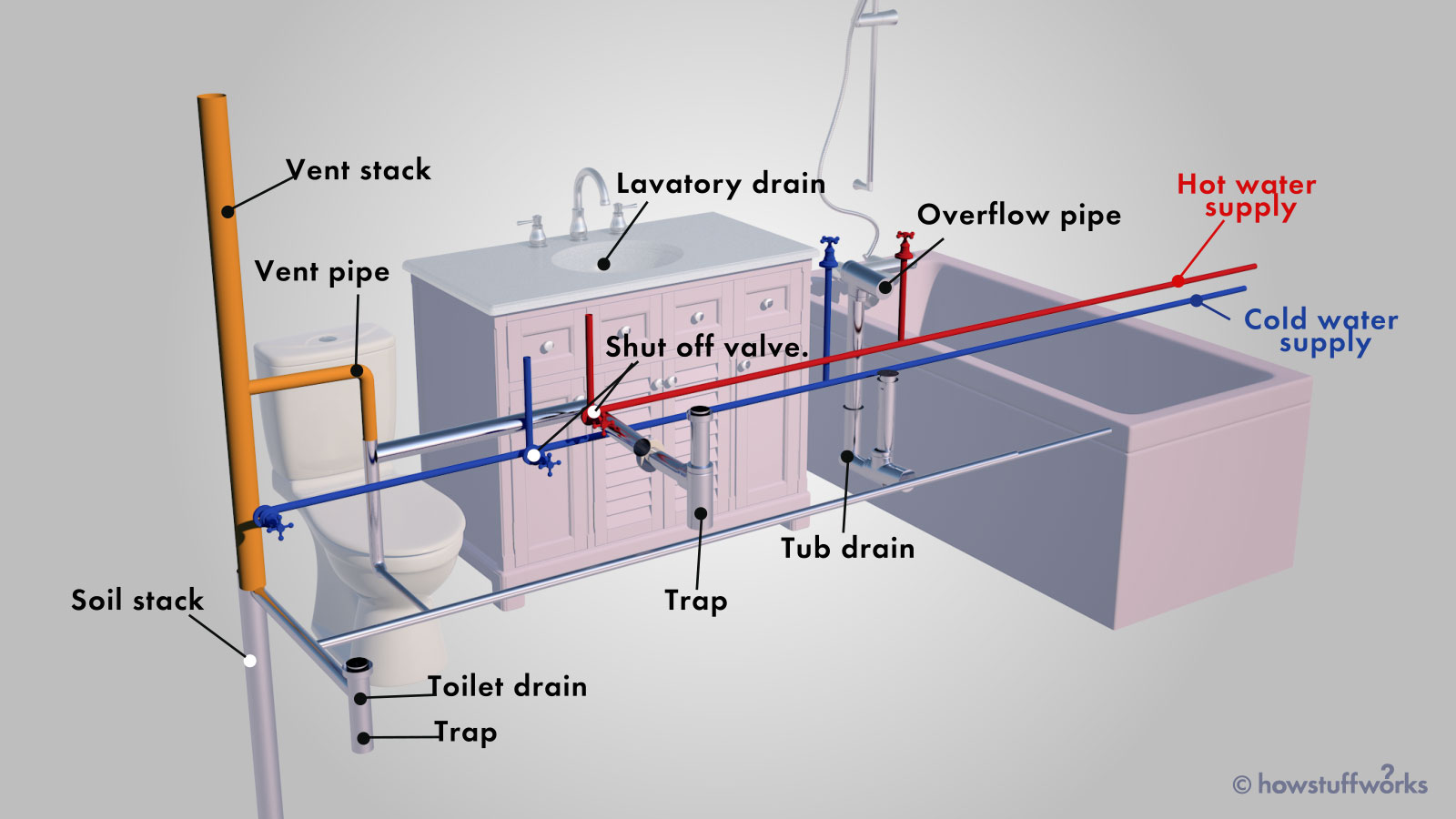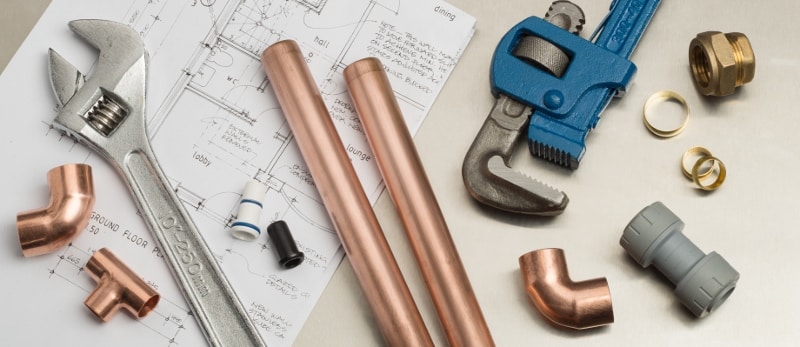Are you searching for resources around Understanding Your Home's Plumbing Anatomy?

Understanding exactly how your home's pipes system functions is crucial for every property owner. From providing clean water for drinking, cooking, and bathing to safely removing wastewater, a well-kept plumbing system is vital for your family members's wellness and convenience. In this comprehensive overview, we'll discover the detailed network that composes your home's pipes and deal pointers on upkeep, upgrades, and taking care of usual concerns.
Introduction
Your home's plumbing system is more than just a network of pipes; it's a complex system that guarantees you have accessibility to clean water and efficient wastewater removal. Understanding its parts and just how they work together can help you avoid costly repair work and make sure every little thing runs efficiently.
Standard Elements of a Plumbing System
Pipes and Tubing
At the heart of your plumbing system are the pipes and tubing that bring water throughout your home. These can be made from different products such as copper, PVC, or PEX, each with its benefits in regards to longevity and cost-effectiveness.
Components: Sinks, Toilets, Showers, and so on.
Components like sinks, toilets, showers, and bathtubs are where water is utilized in your home. Comprehending exactly how these fixtures link to the plumbing system assists in identifying issues and preparing upgrades.
Valves and Shut-off Points
Valves control the flow of water in your pipes system. Shut-off shutoffs are crucial during emergencies or when you require to make fixings, permitting you to separate parts of the system without interrupting water flow to the whole home.
Supply Of Water System
Key Water Line
The major water line links your home to the metropolitan water supply or a personal well. It's where water enters your home and is dispersed to various components.
Water Meter and Stress Regulator
The water meter procedures your water usage, while a stress regulator ensures that water moves at a risk-free pressure throughout your home's pipes system, avoiding damages to pipes and fixtures.
Cold Water vs. Hot Water Lines
Recognizing the distinction in between cold water lines, which supply water straight from the primary, and warm water lines, which bring heated water from the hot water heater, helps in repairing and planning for upgrades.
Water drainage System
Drain Piping and Traps
Drain pipes bring wastewater away from sinks, showers, and bathrooms to the sewer or sewage-disposal tank. Catches prevent sewage system gases from entering your home and also catch debris that might cause blockages.
Ventilation Pipelines
Air flow pipes enable air right into the drain system, protecting against suction that might slow down water drainage and trigger catches to empty. Appropriate ventilation is vital for keeping the integrity of your plumbing system.
Relevance of Proper Drain
Making certain proper drain protects against backups and water damage. Frequently cleaning up drains pipes and maintaining catches can protect against costly repair services and expand the life of your plumbing system.
Water Heater
Kinds Of Water Heaters
Hot water heater can be tankless or traditional tank-style. Tankless heating units warmth water on demand, while containers store warmed water for instant use.
Upgrading Your Pipes System
Reasons for Updating
Upgrading to water-efficient components or changing old pipes can boost water quality, minimize water bills, and enhance the value of your home.
Modern Pipes Technologies and Their Benefits
Check out modern technologies like smart leak detectors, water-saving commodes, and energy-efficient water heaters that can save cash and reduce environmental influence.
Cost Factors To Consider and ROI
Compute the ahead of time costs versus long-term savings when considering plumbing upgrades. Numerous upgrades pay for themselves with reduced utility expenses and fewer repair services.
Just How Water Heaters Attach to the Pipes System
Recognizing just how hot water heater connect to both the cold water supply and warm water circulation lines aids in diagnosing issues like inadequate warm water or leakages.
Maintenance Tips for Water Heaters
Consistently flushing your water heater to eliminate debris, examining the temperature level settings, and examining for leaks can prolong its life-span and boost power performance.
Common Pipes Concerns
Leakages and Their Reasons
Leakages can occur due to aging pipes, loose fittings, or high water pressure. Attending to leakages without delay protects against water damages and mold and mildew development.
Obstructions and Obstructions
Blockages in drains pipes and toilets are frequently triggered by flushing non-flushable products or an accumulation of grease and hair. Utilizing drain screens and being mindful of what goes down your drains can avoid obstructions.
Indications of Plumbing Troubles to Watch For
Low water stress, sluggish drains, foul odors, or unusually high water costs are indicators of prospective plumbing troubles that must be dealt with promptly.
Pipes Upkeep Tips
Routine Inspections and Checks
Set up yearly plumbing inspections to capture problems early. Look for indicators of leaks, corrosion, or mineral accumulation in faucets and showerheads.
DIY Upkeep Tasks
Straightforward jobs like cleaning faucet aerators, checking for bathroom leaks making use of dye tablets, or insulating revealed pipelines in chilly climates can prevent significant pipes issues.
When to Call a Professional Plumbing Professional
Know when a pipes problem requires specialist know-how. Trying complicated fixings without correct understanding can lead to even more damage and higher fixing expenses.
Tips for Decreasing Water Use
Simple routines like fixing leakages promptly, taking much shorter showers, and running complete tons of laundry and recipes can preserve water and lower your energy bills.
Eco-Friendly Pipes Options
Consider sustainable pipes materials like bamboo for flooring, which is durable and green, or recycled glass for countertops.
Emergency situation Preparedness
Steps to Take Throughout a Pipes Emergency situation
Know where your shut-off valves are located and exactly how to turn off the supply of water in case of a ruptured pipe or major leakage.
Importance of Having Emergency Calls Handy
Keep get in touch with details for local plumbing technicians or emergency situation services conveniently available for quick reaction throughout a pipes crisis.
Environmental Effect and Preservation
Water-Saving Fixtures and Appliances
Setting up low-flow taps, showerheads, and toilets can dramatically decrease water use without sacrificing performance.
Do It Yourself Emergency Situation Fixes (When Applicable).
Momentary repairs like making use of duct tape to spot a dripping pipe or putting a pail under a dripping tap can decrease damage up until a specialist plumber shows up.
Verdict.
Understanding the makeup of your home's pipes system empowers you to maintain it effectively, saving time and money on repair work. By complying with routine upkeep regimens and remaining educated concerning contemporary plumbing innovations, you can ensure your plumbing system operates effectively for years to come.
HOW YOUR PLUMBING SYSTEM WORKS
Which Pipes Do What?
Blue lines = fresh water supply entering the building Red lines = hot water supply entering the building Grey lines = pipes carrying waste away from the building and venting pipes carrying gases away from the building (through the roof) YOUR MAIN PLUMBING SYSTEMS
There are two main plumbing systems that support your home s basic plumbing needs one that brings clean water into your home, and one that sends dirty water away from your home. Connected to the toilet, bath, shower, and other faucets in your home, these two systems keep your water flowing in the right directions.
ACCESSING FRESH WATER
Fresh and clean water is brought into your home through the main water supply line . Filtered through one pipe, this water is pressured to flow into the various fixtures in your home at any given time.
This water can be sourced from a well located on your property, a pond or river (mostly cottages), or, as in most cases, from the city s municipal water treatment centre. However, it is important to note that water that is untreated, such as the water siphoned from ponds or rivers, may not be safe to drink. Personal water supplies always need to be treated for hardness and contaminants before consumed.
MUNICIPAL WATER SUPPLIES
Improve taste and odour Remove sediment Eliminate hardness Reduce chlorine COLD WATER SUPPLY VS. HOT WATER SUPPLY
Cold water flows into your home or building through the service line, which then distributes hot or cold water to your fixtures. This line is most commonly run through a central column that runs floor to floor. Hot water runs in short and straight pipes as the longer the pipeline, the more heat that will be lost in the transfer. Having shorter pipes also allows residents to access hot water more quickly.
WASTE WATER SYSTEM
Your wastewater system is divided into two parts pipes that send wastewater away from your home and venting pipes that send sewer gas away from your home. Sewage water travels through pipes that flush the water and waste towards local sewers that are operated and managed by your city or town. Most sewer systems rely on gravity to move the wastewater to where it needs to go.
The further away from your toilet or sink, the larger wastewater pipes become. This allows for waste to be disposed of from various parts of your home or business at once without pipe blockages. The angle and flow of these pipes are also essential for keeping your waste pipes clear of build up.
https://harrisplumbing.ca/how-your-home-plumbing-system-works/

Hopefully you liked our part about . Thank you for finding the time to read through our short article. If you please pause to distribute this content if you appreciated it. Thanks a lot for going through it.
Find Out More